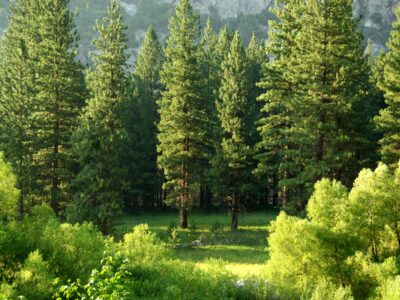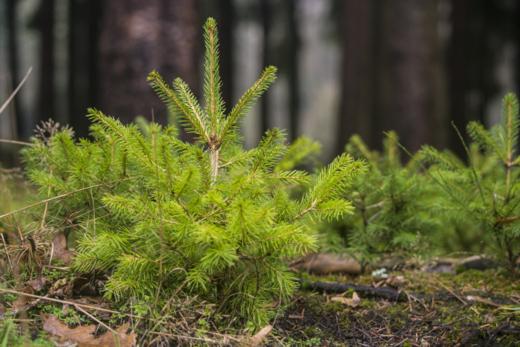The below information was taken from a report by PEFC as we are a certified member
UK Forestry
The total area of woodland in the UK is 3.17 million hectares representing 13% of the total land area. The woodlands can be divided into three distinct categories: plantations, semi-natural woodlands, and mixed woodlands.
Plantation forests in the UK are predominantly composed of non-native coniferous species. They are often planted on economically marginal agricultural land and, in some instances, on areas previously cleared of ancient semi-natural woodlands (ASNW). Sitka spruce (Picea sitchensis) from North America plays a crucial role in the commercial foundation of the UK forest industry, while Scots pine (Pinus sylvestris) stands as the sole native conifer of economic significance. Approximately a dozen conifer species are commonly utilized in forestry.
The UK’s semi-natural woodlands are made up of broadleaved trees interspersed with areas of scots pine, yew and juniper. Native woodlands are of particular value to UK biodiversity, representing a range of UK BAP habitats supporting many important species. The creation of native woodlands has been the focus of woodland expansion schemes in recent years.
Timber production and recreation are important uses of semi-natural woodland, but careful management is required to avoid conflict with wildlife interests. Ancient semi-natural woodlands are especially valuable, as some are remnants of the original post-glacial forest.
Small mixed woodlands, comprising both native and non-native tree species, are scattered across numerous farms and private estates in the UK. These woodlands serve the dual purpose of providing shelter for livestock and enhancing the landscape, representing an important yet often underutilized timber resource.
Wood pasture and urban trees make significant contributions to the UK’s forest resources and they add valuable diversity to the ecosystem.
The Forestry Commission serves as the department of Forestry for the Westminster Government and within the devolved administrations of England, Northern Ireland, Scotland and Wales. It holds responsibility for forest legislation and policy in Great Britain. The UK Forestry Standard and the Forestry Act 1967 form the basis for legal and sustainable management.
The national forest certification standard for the United Kingdom is the UK Woodland Assurance Standard (UKWAS). Approximately 1.5 million hectares of the UK woodland area is certified to the UKWAS standard, representing 44% of the total woodland area.
Extensive programs focusing on woodland diversification are underway, aiming to improve landscape impacts, ensure habitat continuity, enhance biodiversity provision, maintain timber supply and create opportunities for recreation. Restoration of semi-natural woodlands and creation of new native woodland habitats are also policy priorities, along with the creation of new woodlands on urban fringes. Valuable habitats, such as ancient woodland remnants, are protected as part of plantation management.
Forest Ownership in the UK
73% of the UK’s woodland resource is privately owned – by individuals, family trusts and charitable trusts or companies. It is estimated that there are approximately 40,000 private woodland owners, all of which own areas greater than five hectares.
Typically, woodlands owned by private and family interests are a part of mixed estates or are on farms. There are thousands of small farm woodlands, but very few owners with more than 1,000 hectares of woodland. Management of woodlands for game is an important objective on many estates with woodland and on some farms. Larger family estates and company-owned forests typically emphasize timber production. However, an increasing number of woods are now managed specifically for recreational and conservation purposes by charitable trusts and private owners.
The remaining 27% of woodlands is owned publicly, the bulk of it managed by the Forestry Commission and its devolved bodies (e.g Forestry Commission England and National Resources Wales). Some woodlands are owned and managed by other public agencies, including local authorities.
For sustainable wood flooring options, browse our extensive range of products or speak to your experts.
Related News Stories

Laminate Flooring as a Smarter Specification Choice
Read more
Is Laminate Flooring Suitable for Commercial Projects? What Architects and Contractors Need to Know
Read more
Industry insights: How Trident Laminate solves flooring challenges in high footfall environments
Read more
Why Developers Are Choosing Trident Laminate Flooring
Read moreJoin our mailing list
Receive the latest news, offers and inspiration straight to your inbox.

